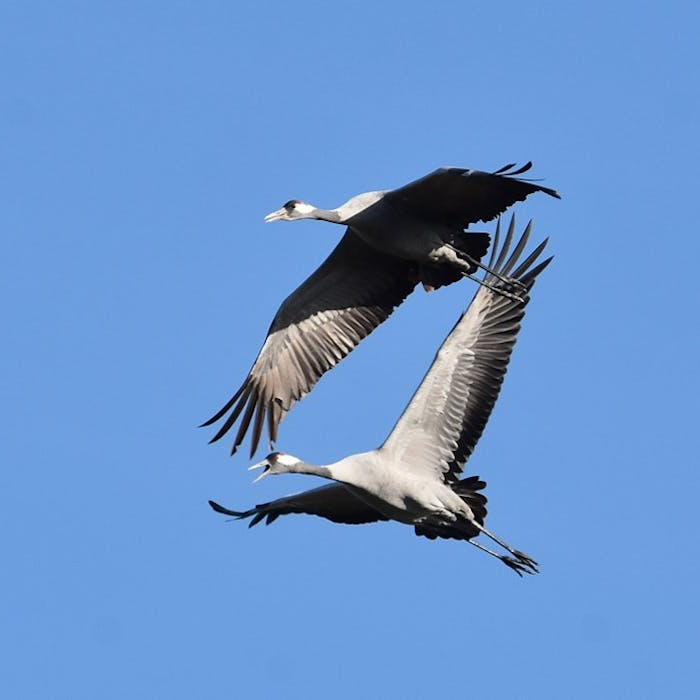
Flying high - the return of the British Crane
Standing an impressive four feet high, the crane is the UK’s tallest bird. With a long neck and legs, slate-grey plumage and a wingspan of up to two metres, the loud, resonating call of the crane can be heard from quite a distance. Once a common a sight, the crane disappeared from the British countryside in the 1600s, with a combination of hunting and loss of wetland habitat leading to their decline.
It made a return in 1979 to the Norfolk Broads, and is now to be found in a number of areas too.
Although similar in look to the heron and stork, cranes are much more closely related to moorhens and coots.
Famous for their dances, male and female cranes will take part in complex courtship displays each year, with head bobs and bows, wings flapping, fluffing of tail feathers, and feet stamping to reinforce their pair bonds.
In fact, cranes were once so common in Britain that 204 were served roasted at a banquet for the Archbishop of York in 1465 and at Henry III’s Christmas banquet in 1251 his party consumed an admirable 115 birds!
Despite being driven to extinction in the 17th century, the crane has made a successful comeback, with a recent survey revealing a population of over 200 birds in the UK.
The return of the crane began in 1979 when a small number of wild cranes settled on the Norfolk Broads, and thanks to the work of conservation groups and reintroduction programmes, these magnificent birds are now established in other areas of the UK, including Suffolk, Gloucestershire, Yorkshire, Somerset and Wales.
Further reading:
Links to external websites are not maintained by Bite Sized Britain. They are provided to give users access to additional information. Bite Sized Britain is not responsible for the content of these external websites.
